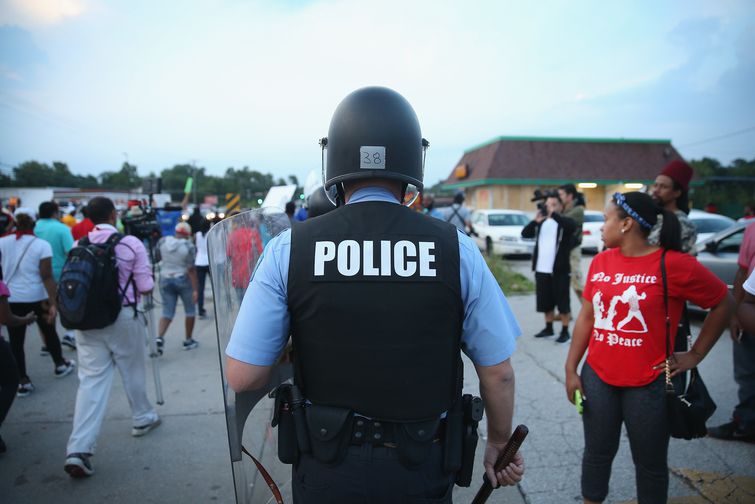
The US Department of Justice found many, many things wrong in its investigation into the Ferguson Police Department, including a pattern of racial bias. But perhaps the most disturbing findings were the racist email exchanges between police and court officials, which show outright hostility and prejudice toward the St. Louis suburb's black residents.
Here are the seven emails the Justice Department uncovered, all of which come from current employees and were apparently sent during work hours:
- A November 2008 email said President Barack Obama won't be president for long because "what black man holds a steady job for four years."
- A March 2010 email mocked African Americans with horrible stereotypes about their families and how they speak. One line of the email read, "I be so glad that dis be my last child support payment! Month after month, year after year, all dose payments!"
- An April 2011 email depicted President Obama as a chimpanzee.
- A May 2011 email said, "An African-American woman in New Orleans was admitted into the hospital for a pregnancy termination. Two weeks later she received a check for $5,000. She phoned the hospital to ask who it was from. The hospital said, 'Crimestoppers.'"
- A June 2011 email said a man wanted to obtain "welfare" for his dogs because they are "mixed in color, unemployed, lazy, can't speak English and have no frigging clue who their Daddies are."
- An October 2011 email had a photo of a bare-chested group of dancing women, apparently in Africa, with the caption, "Michelle Obama's High School Reunion."
- A December 2011 email made jokes based off offensive stereotypes about Muslims.
The Justice Department found no evidence that any of the police and court officials who engaged in these emails were ever disciplined. The investigation also found no indication that any official asked the sender to stop sending such emails, or any proof that the emails were reported. "Instead, the emails were usually forwarded along to others," the report stated.
The emails back an important point made by the Justice Department: the report argued the disparities in law enforcement can only be explained, at least in part, by unlawful bias and stereotypes against African-Americans. The exchanges show that outright racism very clearly.
The report noted that, although black people make up about 67 percent of Ferguson's population, 88 percent of documented uses of force by Ferguson police from 2010 to August 2014 were against African Americans. In the 14 police canine bite cases for which racial data was available, the people bitten were black.
There were similar racial disparities in traffic stops. From 2012 to 2014, 85 percent of people stopped, 90 percent of people who received a citation, and 93 percent of people arrested were black. Black drivers were more than twice as likely as their white counterparts to be searched during vehicle stops, but 26 percent less likely to have contraband.



0 Comments